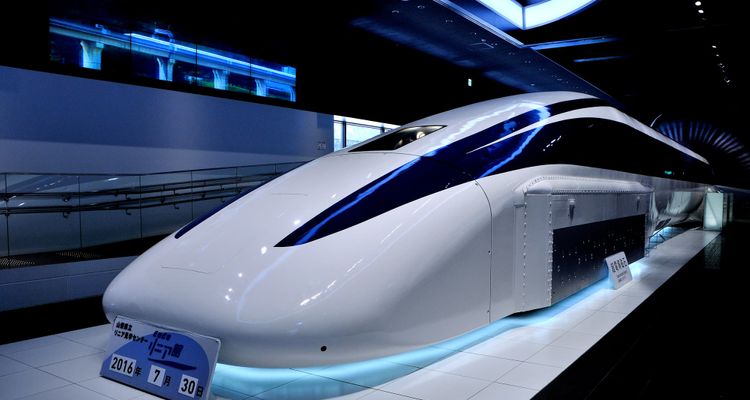Maglev prototype draws electricity like latest smartphones
Japan’s developers unveiled Wednesday a prototype of the magnetic-levitation bullet train that is capable of deriving onboard power completely wirelessly.
The maglev will generate power from inductive charging, the same technology that wirelessly recharges smartphones. The train will be able to attain speeds of 500 kph.
Operator Central Japan Railway, also known as JR Tokai, looks to begin maglev services between Tokyo and Nagoya in 2027. Regarding the prototype, “we’ve come 80 to 90% toward commercial operation,” said Motoaki Terai, who oversees JR Tokai’s maglev development.
The original L0 series maglev contained gas turbine generators that delivered some power for the interior lighting and air conditioning systems. The prototype does away with the turbines, instead relying entirely on coils installed on the train and along the tracks to generate electricity.
This gave birth to a lighter, more streamlined end car that was put on display at Hitachi’s Kasado Works in Kudamatsu, a city southwest of Hiroshima. While the nose of the original L0 looked flat, the prototype nose featured a lengthy bridge.
The prototype bore dark blue stripes bearing a close resemblance to JR Tokai’s Tokaido shinkansen bullet train connecting Tokyo with Osaka. Hitachi is building the end cars while Nippon Sharyo is manufacturing the intermediate carriages.
The maglev would complete the entire 236 km trip in as little as 40 minutes. The ultimate goal is to export the technology to the U.S.
In Japan, however, the maglev faces an obstacle to completion in a mountainous stretch in Shizuoka Prefecture. There, the governor continues to block construction of a 9 km tunnel, citing a potentially deleterious effect on water resources.
The novel coronavirus outbreak has slashed ridership in the Tokaido shinkansen, creating more woes for JR Tokai.













![Hotstar Premium Cookies 2019 [*100% Working & Daily Updated*] Hotstar Premium Cookies 2019 [*100% Working & Daily Updated*]](https://tahav.com/wp-content/uploads/2019/11/Hotstar-Premium-Cookies-Free-100x70.jpg)



